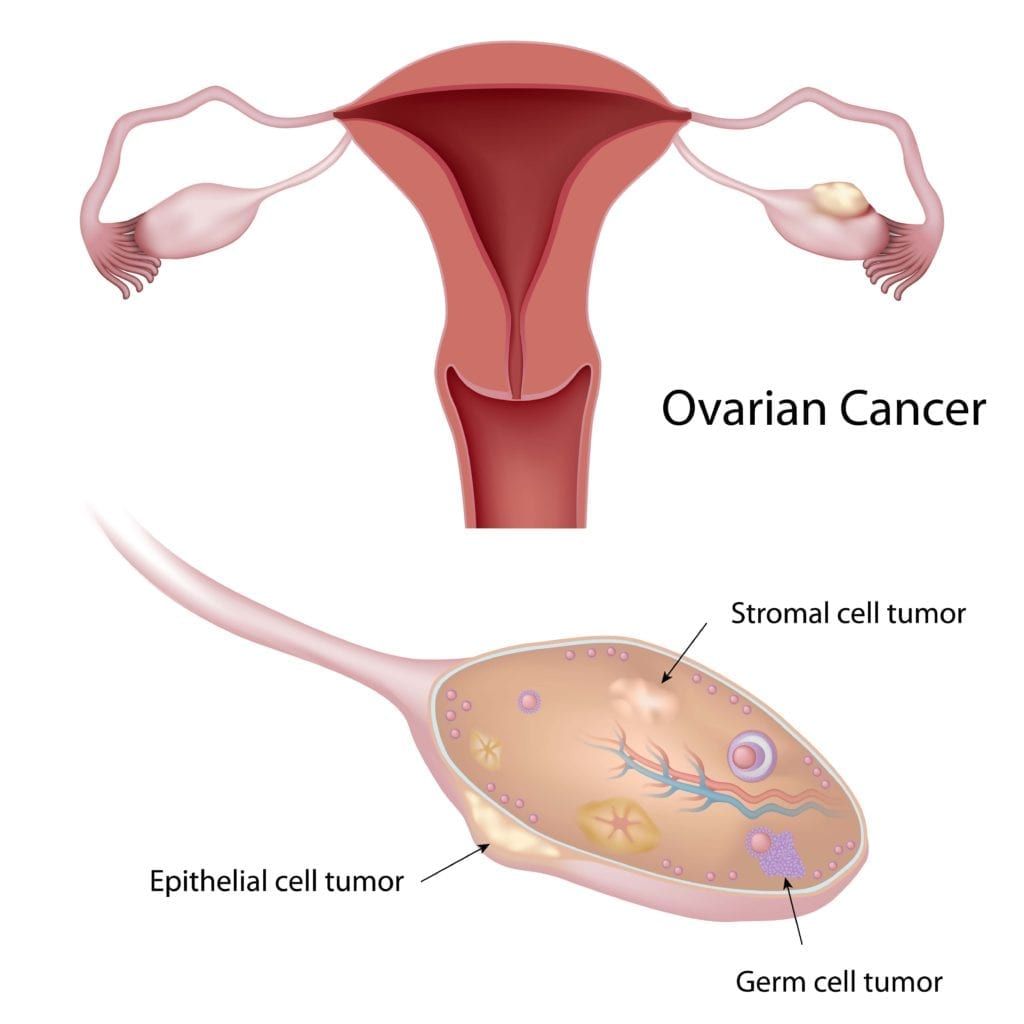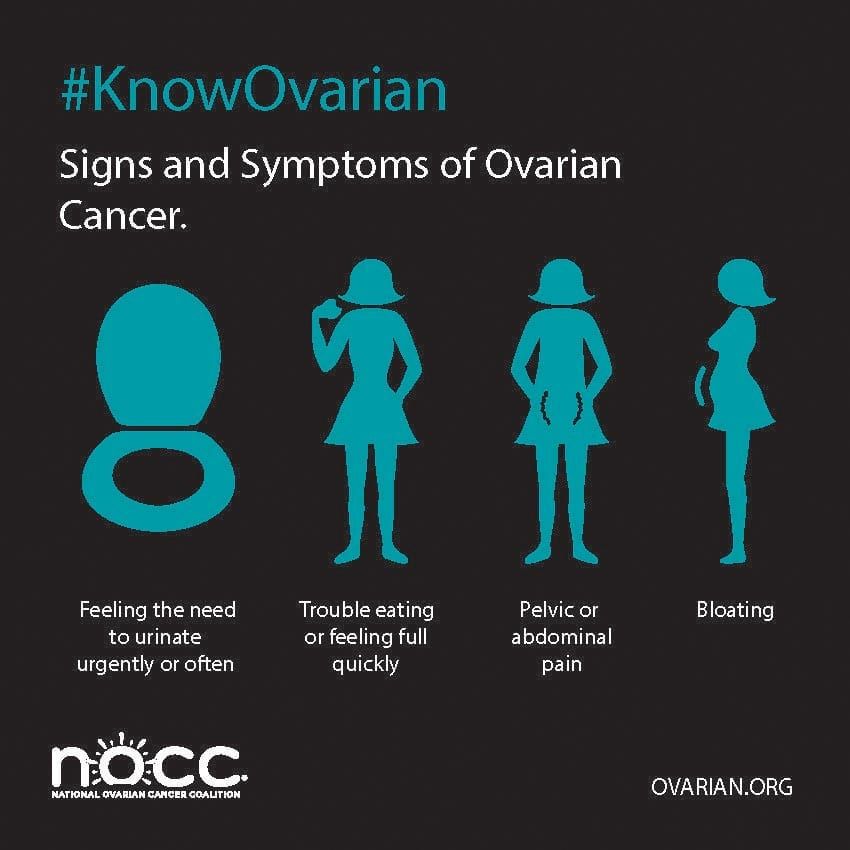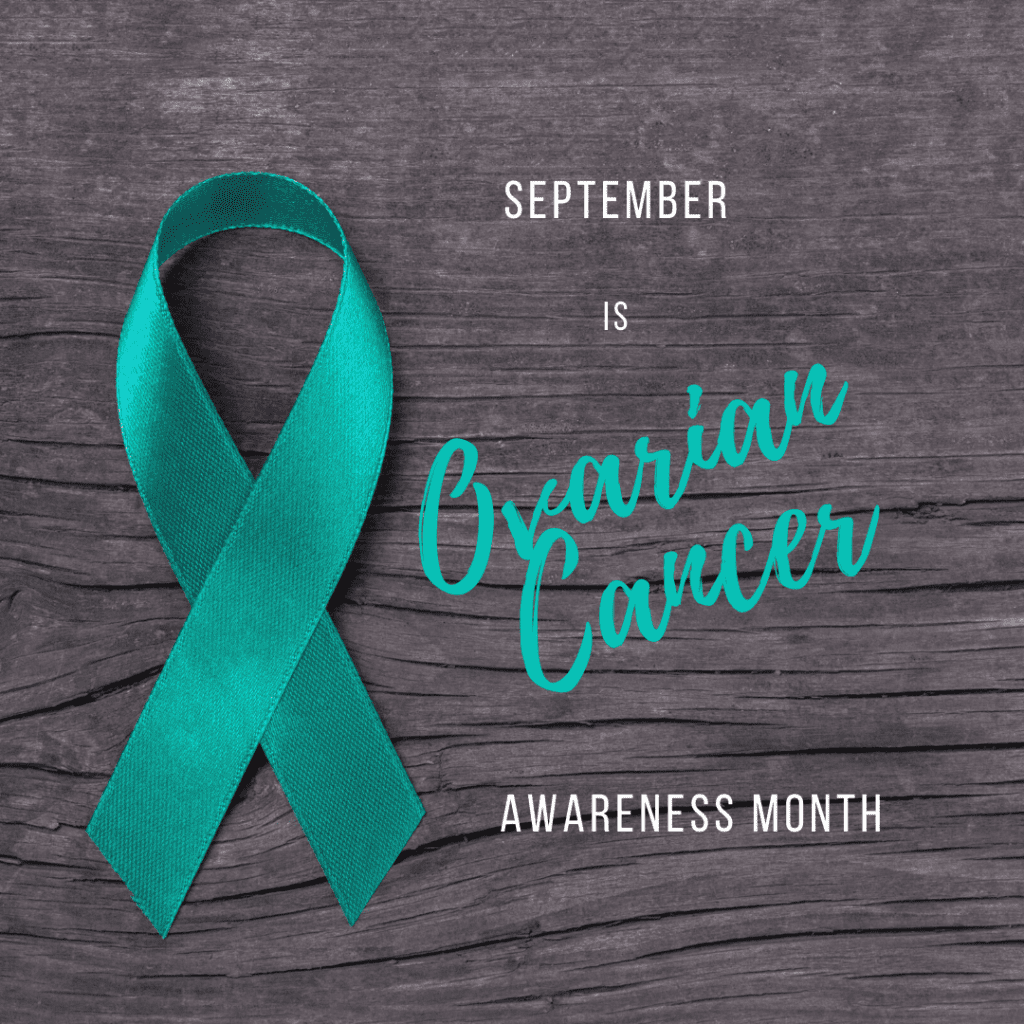Did you know that September is Ovarian Cancer Awareness Month? Unfortunately, the American Cancer Society estimates that over 21,000 women will be diagnosed with ovarian cancer in 2020 and that approximately 14,000 women will die from ovarian cancer. Therefore, the month of September has been dedicated to raise awareness, fund research, and provide support for the victims, family, and friends of those with ovarian cancer.
Like its name suggests, ovarian cancer is an abnormal and uncontrollable growth of cells that appear around, inside, or on the outer layer of the ovaries. Since cancer cells outlive normal cells and continue to create more abnormal cells, this eventurally results in the formation of a tumor. If the cancer cells migrate into the bloodstream or lymph system, then they can also travel to other parts of the body in a process called metastasis.
While there are over 30 million different types of ovarian cancer, all types of ovarian cancer are classified by the type of cell that they start as. There are three common types of cells associated with ovarian cancer, including:

- Surface Epithelium are cells that cover the outer lining of the ovaries. Epithelial tumors are usually benign and include serous adenomas, mucinous adenomas, and Brenner tumors. On the other hand, carcinomas that begin in the tissue that lines the ovaries are cancerous and are the most common and dangerous type of ovarian cancer. 85-90% of ovarian cancers are carcinomas and around 70% of women with this type of cancer are not diagnosed until the later stages.
- Germ cells are those that are destined to form eggs. Like epithelial tumors, most germ cell tumors are benign, but some can be cancerous. Germ cell malignancies like maturing teratomas, dysgerinomas, and endodermal sinus tumors are commonly found in younger women ranging from teenagers to those in their early 20s. Luckily, 90% of germ cell malignancies can be treated successfully while also preserving fertility.
- Stromal cells are connective tissue cells that produce estrogen and progesterone. Stomal tumors such as granuosa-theca tumors and Serotli-Leydig cell tumors are rare, low-grade cancers. Generally, only 2% of ovarian tumors are granulosa cell tumors and around 70% of them are diagnosed in the first stage.
It is estimated by the National Ovarian Cancer Coalition that 1 in 78 women will be diagnosed with ovarian cancer at some point during their lifetime. For women ages 35-74, ovarian cancer represents the fifth leading cause of cancer-related deaths. However, when ovarian cancer is diagnosed in stages I or II, there is a 90% 5-year survival rate. One of the main problems that organizations such as the NOCC aim to highlight is that there is currently no early detection test for ovarian cancer. Because of this, only 20% of cases are diagnosed early and the remaining 80% can have a survival rate of 28% or lower.
All women are at risk for ovarian cancer, however there are a few risk factors that can increase the chances of developing the disease such as increasing age, infertility, or a personal/family history of breast, ovarian, or colon cancer. If you are at an increased risk for ovarian cancer, it is recommended that you undergo genetic counseling with possible genetic testing for the BRCA1 and BRCA2 gene, undergo screenings using transvaginal ultrasonography, or consider having your ovaries removed if you no longer wish to preserve fertility.
Additionally, it is important for all women to be aware of the signs and symptoms of ovarian cancer. It is also important to note that many of these symptoms are vague, therefore persisting symptoms that do not respond to diet changes, exercised, laxitives, or rest indicate a need to see your gynecologist as soon as possible. Possible signs and symptoms of ovarian cancer include:

- Bloating
- Pelvic or abdominal pain
- Trouble eating or feeling full quickly
- Feeling the need to urinate urgently or often
- Fatigue
- Upset stomach or heartburn
- Back pain
- Pain during sex
- Constipation or menstrual changes
As mentioned above, there is currently no reliable screening test for ovarian cancer. Although many women believe that a Pap test can detect ovarian cancer, a Pap test can only determine the presence of cervical cancer. Even though there are no specific screening tests for ovarian cancer, there are a few tests that may be able to detect abnormalities associated with ovarian cancer. These tests include: pelvic exams, transvaginal sonography, and a CA-125 blood test.

Dr. Geoffrey Zann is a Certified Robotic Da Vinci Surgeon, Board-certified by the American College of Obstetricians and Gynecologists, and a Diplomat of the American Board Obstetrics of Gynecology. He has been a member of the American Society for Colposcopy and Cervical Pathology, American Association of Gynecologic Laparoscopists, and the Hugh R. K. Barber Obstetric and Gynecologic Society.
